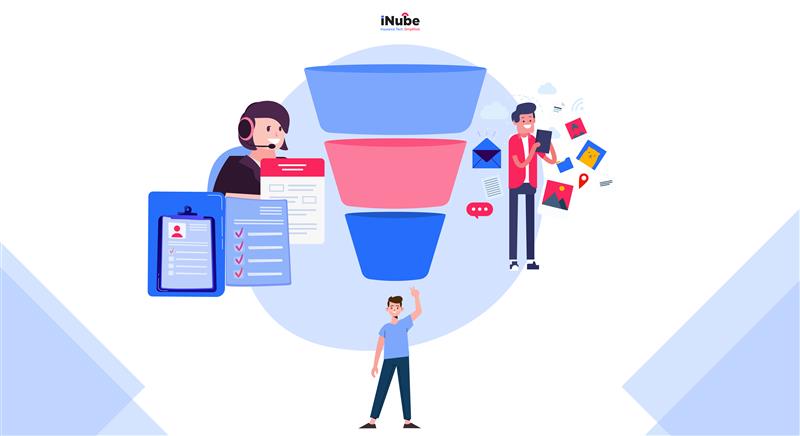The last decade has given a significant boost to online insurance, enforcing the new rules for insurance engagement among Gen Zs and millennials. These digital-first generations do not see insurance as a once-in-a-lifetime transaction; rather, they see it as a service that must evolve with their lifestyle, values, and financial realities. For insurers, this essentially means rethinking the distribution models, customer journeys, and the methods that they use to foster trust.
However, one critical question remains paramount- What will actually strike a chord with Millennials and Gen Zs, and what doesn’t?
Key Drivers for Millennials and Gen-Z in Insurance
Before exploring the different distribution strategies, conduct thorough research on these cohorts:
Transparency and Trust
The Millennials are a generation that has witnessed the 2008 financial crisis, while Gen-Z has matured in an era of instant fact-checking. Both these generations naturally reject the jargon-heavy policies
Mobile-First Convenience
86% of the Gen-Z population now starts their research on smartphones, giving a critical angle for the insurers to make their products mobile-friendly.
Personalization over One Size Fits All
Right from streaming to shopping, personalization defines the choices of the newer demographics. Insurance is now far from one size fits all; it has to now suit the individual’s interest.
Value-driven Decisions
This is another one of the key drivers that is influencing the decision-making of Gen-Z and millennials. They are aligning their purchases with ethics, sustainability, and wellness. This is leading the insurers to offer ethical or wellness-linked policies for gaining traction.
What is Working in Insurance Distribution?
Today, the insurance distribution landscape is experiencing a steep change as customer demands and technology innovation go for a spin. Here’s how the insurance distribution landscape is changing:
Digital-first Distribution Channels
The traditional agent network still plays an important role; however, only when supported by the digital insurance platforms. The Millennials and the Gen Zs today expect instant quotes, simple comparisons, and mobile-friendly onboarding.
Omni-channel distribution, which serves as an interconnected network of insurance agents, apps, and online touchpoints that connect seamlessly. This proves to be a winning formula for all the insurers to redefine insurance distribution as per the individual needs of the customers while also giving them an effortless digital experience.
Micro-Insurance and Modular Products
A 25-year-old might not be buying a 30-year term plan; however, they will be paying for a bite-sized, modular insurance that will cover their lifestyle, which includes wellness, gadget, travel, and mental health.
Amongst the Gen Z population, Microinsurance is becoming a trend, which is fueled by affordability and flexibility. Additionally, the wellness-linked insurance, especially health insurance with rewards for fitness, resonates strongly with this group.
Trust and Transparency as Differentiators
Trust and transparency will play a pivotal role in shaping the new-age insurance distribution. For the millennials and Gen Z, trust and transparency will become a currency. The policies that are packed with fine print erode credibility instantly.
A simple and clear onboarding language significantly boosts confidence, while also openly showcasing the claims settlement ratios and real customer testimonials. The insurers can leverage ethical stances such as sustainable insurance products that are no longer optional; rather, they are expected.
Personalization enhanced by Tech
The AI-driven policy recommendations, app-based nudges, and personalized insurance experiences show the policyholders that the insurers will understand their unique life stages. Additionally, millennials prefer health and term insurance for protection, as Gen Z leans towards hybrid products that double as investments or support wellness.
Past is History- The Practices that Don’t Work Anymore
Relying on traditional processes will only lead to a sour customer experience while also hampering distribution growth. Here are some of the practices that insurers still rely upon when it comes to distribution:
Complex Jargon and Paper-Heavy Processes
The insurers still rely upon complex jargon and paper-heavy processes, which include long forms and agent dependency that feels quite outdated. Gen Z, in particular, abandons the onboarding flows within minutes if they are intuitive.
One Size Fits All Policies
The rigid plans that are designed for the older generations essentially fail to connect. The millennials and Gen Z demand more flexible policy terms, a product that does not adapt to their evolving needs when left untouched.
Ignoring Social and Digital Platforms
Today, insurance is not just sold on digital platforms, but on social media. The Millennial and Gen Z populations are quite active on social media platforms like Instagram, YouTube, and more, such as places where these platforms serve as a primary information source for the younger buyers. Without the content-driven engagement, the insurers risk invisibility.
Transactional Selling without Community
Another outdated practice, which the insurers still rely upon for insurance distribution, is transactional selling without community. Gen Z expects the brands to educate, support, and align with their values. A typical sales pitch without any authentic storytelling will create distrust.
Distribution is no longer in Words
The insurance industry has come to a crossroads where clinging to traditional insurance distribution and risking alienating the very customers will define the next 30 years. The insurers need to adapt to a digital-first, trust-centric, value-driven model and unlock a market that is eager to engage, which essentially gives them the feeling of being heard and respected.
The future of insurance essentially belongs to those who offer trust, transparency, and not just sell policies.

Archismita Mukherjee
Insurance Content Analyst


